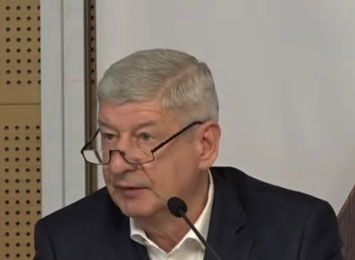How to create a healthy urban environment
Within Russian Construction Week the Moscow City Urban Planning Policy Department held a discussion on Design and Construction Standards for Sustainable Cities. The event was held offline in compliance with all epidemiological and sanitary requirements and simultaneously via video conference. Ekaterina Shapochka, a director of BCG Company, moderated the discussion.
Sergey Lyovkin, Head of the Moscow City Urban Planning Policy Department, Nikita Rumyantsev, Head of the Analytical Centre of the Moscow Urban Forum, Andrey Benuzh, Head of the Green Standards Research Centre, Anton Finogenov, Deputy Director General of the DOM.RF Foundation, Ildar Khairullin, Director General of the MMK Foundation, and others took part in the discussion
Today, cities are forced to rethink their urban planning policies in response to contemporary challenges, including epidemics and natural disasters. The answer is to introduce modern design and construction standards for sustainable cities. There are many internationally recognised green building standards, such as BREEAM, Active Design, WELL, FITWELL, BREEAM, LEED, regulating the entire lifecycle not only of buildings, but also of entire neighborhoods.
Moscow is actively introducing green building principles into its urban development projects, among them programmes such as My Street, My Neighbourhood, and Moscow Renovation Standard. Modern design and construction standards and programmes for creating a comfortable urban environment aim to solve the problem of environmental safety, as well as to improve the quality of life and health of the population, the transition to a sustainable model of urban development.
The results of research carried out on two Moscow districts (Ivanovskoye and Metrogorodok) have shown that the implementation of Urban Health principles used in designs of the new renovation neighbourhoods can improve the quality of the environment in terms of its impact on the health and well-being of people by half. This was stated today during the discussion by Sergey Lyovkin, Head of the Moscow City Urban Planning Policy Department.
"An assessment of the Ivanovskoye and Metrogorodok districts before and after the implementation of the renovation project showed that the improvements have led to significant positive effects on the health of the residents: the quality of the environment, in terms of its impact on health and well-being, has doubled on average," said Sergey Lyovkin.
According to him, the methodologies used are a set of universal tools for a comparative analysis of the healthy urban environment of the world's largest cities.
"It is worth noting that existing norms and rules, regulations and standards of construction, observing which urban development and design of residential buildings are carried out, including under the renovation programme, already contain a significant part of the parameters of the Urban Health standard. But there is potential to update and expand the health agenda in existing regulations. The use of experience and strict adherence to existing regulations will make it possible to create a healthy urban environment without additional financial costs or significant changes to the regulatory framework," concluded the head of the department.
The discussion considered design and construction standards that improve the quality of life. The questions raised were how does the implementation of modern design and construction standards affect living standards in cities, and the health of urban populations? What is the role of design in modern design and construction standards?
The Russian Construction Week programme
Press Service, EXPOCENTRE AO
